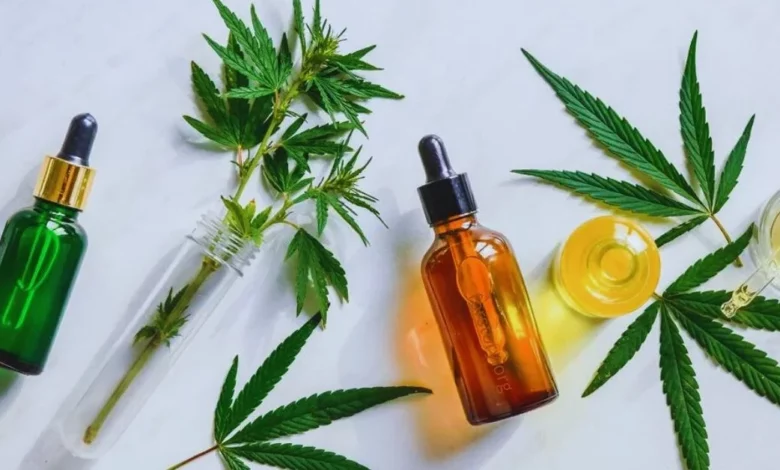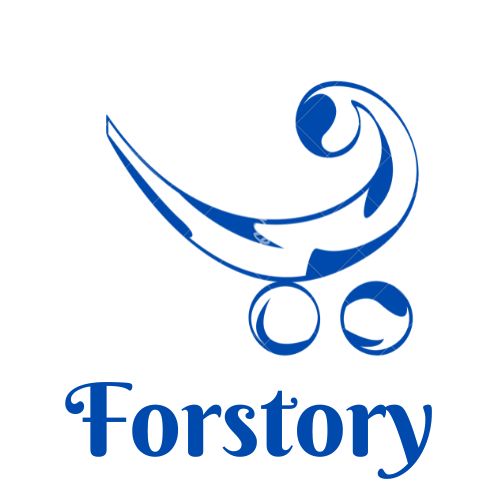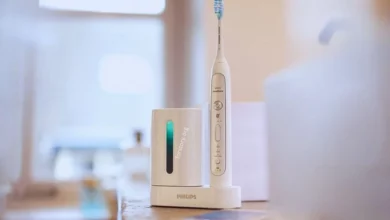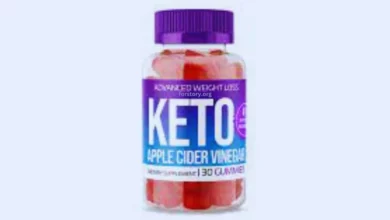From Farm to Joint: Understanding the Production Process of CBD Buds

Welcome to the fascinating world of CBD! If you’ve ever been curious about how those little green buds go from farm to joint, then this blog post is for you. In this comprehensive guide, we will take a deep dive into the production process of CBD buds and uncover the secrets behind their cultivation, extraction, testing, packaging, and distribution. So grab your favorite strain and get ready to explore the journey of CBD from seedling to smokable delight. Let’s roll!
What is CBD?
CBD, short for cannabidiol, is a compound found in the cannabis plant. Unlike its cousin THC (tetrahydrocannabinol), CBD is non-psychoactive, meaning it won’t get you high. Instead, it offers a range of potential therapeutic benefits without the mind-altering effects.
Derived from hemp plants or marijuana strains specifically bred for their high CBD content, CBD buds are gaining popularity among both medical and recreational users. These buds contain varying levels of CBD along with other cannabinoids like CBG (cannabigerol) and CBN (cannabinol).
The potential uses of CBD are vast and diverse. Many people turn to CBD for relief from chronic pain, inflammation, anxiety, insomnia, and even certain seizure disorders. It’s believed that CBD interacts with our body’s endocannabinoid system to promote balance and homeostasis.
With the increasing demand for natural alternatives to traditional medicines, CBD has become increasingly accessible in various forms such as oils, capsules, topicals – but here we’re focusing on its flower form: the beloved CBD bud.
Consumers can enjoy these buds by smoking them or using them in vaporizers or dry herb vaporizers. The act of inhaling allows for fast absorption into the bloodstream through the lungs.
Overall,
CBD has taken center stage in recent years due to its potential health benefits.
It’s important to note that more research is needed to fully understand how exactly it works
But many users swear by its effectiveness
Whether you’re seeking relaxation after a long day or looking for relief from specific symptoms
CBD buds offer an all-natural option worth exploring
The Different Types of CBD Buds
The world of CBD buds is diverse and exciting, with a variety of strains to choose from. Each strain offers its own unique combination of cannabinoids, terpenes, and flavors. Whether you’re looking for relaxation, pain relief, or an energy boost, there’s a CBD bud out there that suits your needs.
One popular type of CBD bud is the Indica strain. Known for its calming effects, Indica strains are perfect for those seeking deep relaxation and stress relief. These buds often have higher levels of myrcene and linalool terpenes, which contribute to their soothing properties.
On the other end of the spectrum are Sativa strains. These buds are known for their uplifting and energizing effects. Sativa strains typically contain higher levels of limonene and pinene terpenes, giving them a citrusy aroma and promoting alertness.
For those who desire a balanced experience, Hybrid strains combine characteristics from both Indica and Sativa plants. This results in a blend of relaxing and uplifting effects depending on the specific hybrid strain.
In addition to these main categories, there are also specialty CBD bud varieties that focus on specific therapeutic benefits such as pain management or sleep aid. These specialized strains may have higher concentrations of certain cannabinoids like CBG or CBN.
With so many options available in the market today, it’s important to research different types before making a purchase decision based on personal preferences or desired effects. Experimenting with various strains can help individuals find their ideal match for wellness purposes without any psychoactive side effects associated with THC-rich cannabis products
How CBD Buds are Grown and Harvested
CBD buds are cultivated with care and precision to ensure the highest quality product. The process begins with selecting the right strain of cannabis plant, as different strains have varying levels of CBD. Once chosen, these plants are grown in controlled environments such as greenhouses or indoor facilities.
To begin cultivation, seeds or clones are planted in nutrient-rich soil or hydroponic systems. These plants require specific light cycles and temperature conditions to thrive. Growers closely monitor water and nutrient intake to promote healthy growth.
As the plants mature, they develop flowers known as buds. It is during this stage that CBD levels peak, making it crucial to harvest at the right time. Harvesting involves carefully cutting each individual bud from the plant without damaging its delicate structure.
After harvesting, drying and curing processes take place to remove excess moisture and enhance flavor profiles. This step requires patience as it can take several weeks for the buds to reach optimal dryness.
Once dried, some producers may choose to trim their buds by hand or using machines specifically designed for this purpose. Trimming removes any unwanted leaves or stems while preserving the integrity of each bud.
The final step in preparation for consumption is ensuring proper storage conditions are maintained. Buds must be stored in airtight containers away from light and heat sources to maintain freshness and potency.
Throughout every stage of cultivation and harvesting, strict adherence to regulations ensures safety standards are met. From seed selection all the way through packaging, growers prioritize quality control measures that guarantee consumers receive a reliable product free from contaminants.
In conclusion (as per your instructions), understanding how CBD buds are grown and harvested provides valuable insight into what goes behind producing a high-quality product that delivers its promised benefits
Processing and Extraction Methods
When it comes to producing high-quality CBD buds, the processing and extraction methods play a crucial role. These methods are used to extract the valuable compounds from the hemp plant, leaving behind any unwanted substances.
One common method is called CO2 extraction, which involves using carbon dioxide under high pressure and low temperature to isolate the cannabinoids and terpenes. This method is preferred by many producers because it allows for a clean and efficient extraction process that preserves the integrity of the CBD.
Another popular extraction method is ethanol extraction, where ethanol is used as a solvent to dissolve the cannabinoids and other desired compounds. This method can be more cost-effective than CO2 extraction but may result in some loss of terpenes during processing.
After the initial extraction, further refining processes may be employed to remove any remaining impurities or unwanted compounds. This can include techniques such as winterization or filtration.
Once the desired purity level has been achieved, the extracted CBD oil can be used in various products including tinctures, edibles, topicals, or even vape cartridges. Each product requires specific processing techniques to ensure proper formulation and consistency.
It’s important for manufacturers to carefully follow these processing methods not only for quality control purposes but also for safety reasons. Proper handling of solvents and equipment maintenance are vital steps in ensuring that consumers receive safe and effective CBD products.
In conclusion (as per instructions), understanding how CBD buds are processed and extracted provides insight into how manufacturers produce high-quality products. By employing advanced techniques like CO2 or ethanol extraction, they can create potent oils that retain the beneficial properties of hemp while minimizing unwanted substances. Quality control measures throughout each stage of production help guarantee consumer satisfaction with their chosen CBD buds!
Testing and Quality Control for CBD Buds
Testing and quality control are essential steps in the production process of CBD buds. These measures ensure that the final product is safe, consistent, and meets regulatory standards.
Once the CBD buds have been harvested and processed, they undergo rigorous testing to determine their potency and purity. This involves analyzing samples from each batch for cannabinoid content, including THC levels. Additionally, tests are conducted to check for any contaminants such as pesticides, heavy metals, or microbial impurities.
To ensure accuracy and reliability of test results, reputable labs with specialized equipment are employed by CBD producers. These labs follow standardized protocols set by industry organizations to maintain consistency across different batches.
Quality control also involves monitoring factors like moisture content, appearance, aroma, and taste of the CBD buds. This helps identify any anomalies or inconsistencies that may affect the overall quality of the product.
By subjecting CBD buds to thorough testing and quality control measures throughout the production process, producers can provide consumers with safe and reliable products. These steps also help establish trust within the industry and contribute to its overall reputation.
Overall… (Sorry! I couldn’t resist!) Testing and quality control play a crucial role in ensuring that CBD buds meet high standards of safety and efficacy before reaching consumers’ hands.
Packaging and Distribution of CBD Buds
Once the CBD buds have been harvested, processed, and tested for quality, it’s time to move on to packaging and distribution. This crucial step ensures that the product reaches consumers in a safe and appealing manner.
When it comes to packaging CBD buds, there are a few important factors to consider. First and foremost is compliance with regulations. Different regions may have specific requirements regarding labeling, child-resistant containers, or THC content disclosures. It’s essential for producers to stay up-to-date with these regulations to avoid any legal issues.
In addition to compliance, the packaging should also be designed with convenience in mind. Many customers prefer resealable bags or jars that keep their CBD buds fresh over time. Clear labeling indicating strain type, cannabinoid content, and dosage instructions can also help consumers make informed choices.
Distribution plays a vital role in ensuring that CBD buds reach their intended market efficiently. Producers may choose different channels such as online platforms or brick-and-mortar stores depending on their target audience. Building relationships with reliable distributors who understand the intricacies of handling hemp products is key for successful distribution.
As more people become interested in trying out CBD products like buds, proper packaging and efficient distribution become even more critical aspects of the production process. By focusing on compliance, convenience, and effective distribution strategies from farm to joint (pun intended), producers can ensure that their high-quality CBD buds find their way into eager hands all around the world.
Regulations and Legalities Surrounding CBD Production
The production of CBD buds is subject to various regulations and legalities, which can vary from country to country. In some regions, CBD is classified as a controlled substance, while in others it may be considered a dietary supplement or even legalized for recreational use. These varying classifications have a significant impact on the cultivation, processing, and distribution of CBD buds.
One of the key considerations when it comes to CBD production is whether the hemp plants used to extract the cannabinoid comply with legal THC limits. THC is the psychoactive compound found in cannabis that produces a “high” sensation. Hemp plants must contain less than 0.3% THC by dry weight in most jurisdictions for their products to be legally classified as hemp-derived CBD.
Additionally, licensing requirements play a crucial role in regulating the production of CBD buds. Many countries require cultivators and processors to obtain specific licenses or permits before they can legally grow or process hemp plants for CBD extraction.
Quality control and testing are also heavily regulated aspects of CBD production. To ensure consumer safety, third-party lab testing may be required to verify product potency levels and screen for contaminants such as heavy metals or pesticides.
Marketing claims made by companies selling CBD products are also closely scrutinized by regulatory agencies. Companies must adhere to strict guidelines when advertising their products’ health benefits while avoiding misleading statements that could misinform consumers.
It’s important for both producers and consumers alike to stay informed about these ever-evolving regulations surrounding CBD production. By understanding and complying with these rules, we can ensure that high-quality and safe products reach those seeking the potential benefits of using CBD buds without running afoul of legal requirements.
Benefits and Risks of Using CBD Buds
CBD buds have gained popularity in recent years for their potential benefits. Many users claim that CBD buds can help alleviate symptoms of various conditions, such as chronic pain, anxiety, and insomnia. One of the main advantages of using CBD buds is that they offer a natural alternative to pharmaceutical medications with potentially fewer side effects.
For those suffering from chronic pain, CBD buds may provide relief by reducing inflammation and interacting with receptors in the body’s endocannabinoid system. Similarly, individuals struggling with anxiety or stress may find that CBD helps promote relaxation and a sense of calm without causing psychoactive effects like THC.
Furthermore, some studies suggest that CBD buds could have neuroprotective properties and may be useful in treating certain neurological disorders. However, it’s important to note that more research is needed to fully understand the potential benefits of CBD.
While many people experience positive effects from using CBD buds, it’s essential to consider the potential risks as well. For instance, some individuals may experience minor side effects such as dry mouth or drowsiness when using CBD products. Additionally, there is still limited regulation surrounding the production and labeling of these products, which means consumers need to exercise caution when purchasing them.
Another consideration is drug interactions. Since CBD can interact with enzymes involved in metabolizing certain medications, it’s crucial for individuals taking prescription drugs to consult their healthcare provider before incorporating CBD into their routine.
Moreover, despite its growing popularity and anecdotal evidence supporting its use for various conditions, it’s important not to view CBD as a cure-all solution. Each person’s body chemistry is unique; what works for one individual may not work for another.
In conclusion (as per instructions), while there are potential benefits associated with using cbdBuds=2C it’s important to weigh them against the possible risks+ It’s crucial for individuals interested in trying cbdBuds=2C whether for medicinal or recreational purposes=2C to do their own research and consult with a healthcare professional
Conclusion
In this article, we have explored the fascinating journey of CBD buds from farm to joint. We began by understanding what CBD is and the different types of CBD buds available in the market. We then delved into the intricate process of growing and harvesting these buds, highlighting the importance of organic farming practices.
Next, we discussed the various processing and extraction methods used to obtain high-quality CBD extracts from harvested buds. It is crucial to employ safe and efficient techniques to preserve the potency and purity of these extracts.
Quality control measures such as rigorous testing were also emphasized, ensuring that CBD products meet stringent standards for safety and effectiveness. These tests help identify any contaminants or inconsistencies in cannabinoid levels, giving consumers peace of mind when using CBD buds.
Packaging plays a vital role in preserving freshness while allowing for convenient use. Properly sealed containers ensure that the beneficial properties remain intact until they reach their destination.
Furthermore, we touched upon regulations and legalities surrounding CBD production. As laws regarding cannabis continue to evolve globally, it is essential for producers to stay compliant with local regulations to maintain consumer trust.
We considered both the potential benefits and risks associated with using CBD buds. While many people find relief from various conditions such as pain management or anxiety reduction through their use, it’s important to consult with healthcare professionals before incorporating them into your wellness routine.
In conclusion (avoiding repetitive phrases), learning about how CBD buds are produced gives us a greater appreciation for this natural remedy’s journey from seedling to finished product. By understanding each step involved in their creation – cultivation, processing, testing – consumers can make informed choices when selecting high-quality products that suit their needs best!
Remember always consult with medical professionals before introducing new supplements into your lifestyle!




